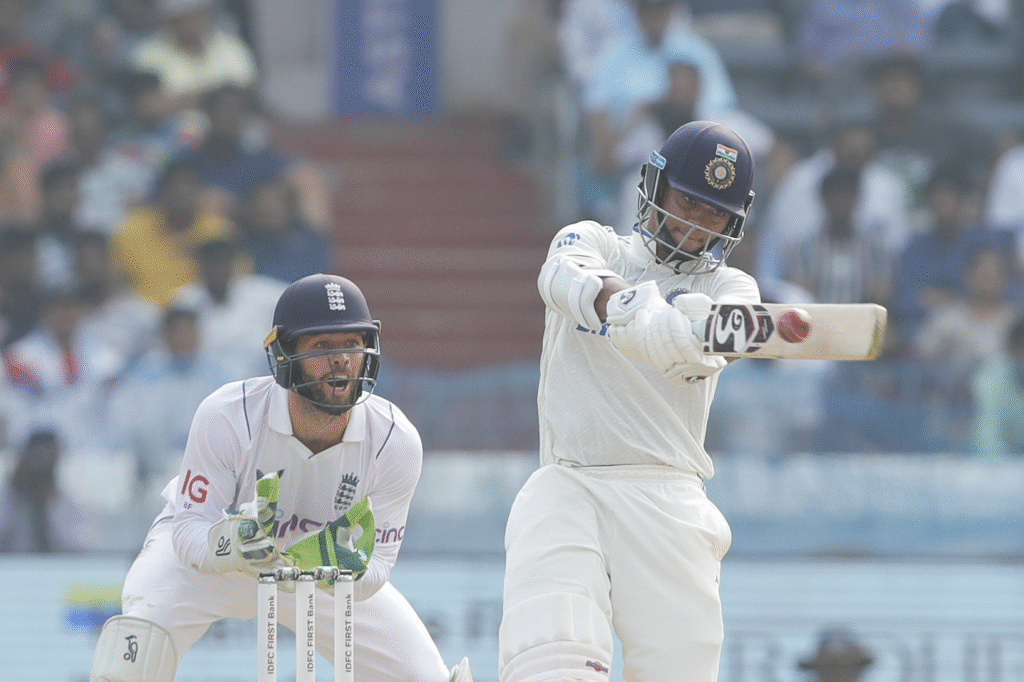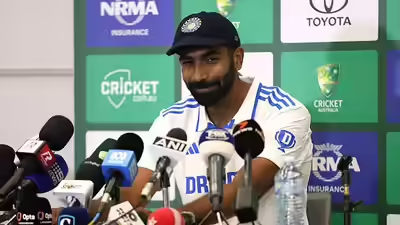IND vs ENG 2nd Test 2025: Edgbaston Boundary Controversy – Bazball Boost or Strategy Twist
IND vs ENG 2nd Test 2025 at Edgbaston sparks controversy as an ex-England cricketer alleges boundaries were shortened to favor Bazball. Did England tweak conditions to gain an edge
On July 2, 2025, ahead of Day 1 of the 2nd Test at Edgbaston, the England team—guided by captain Ben Stokes and coach Brendon McCullum—made a notable change to the playing field: the boundary ropes were pulled in, shrinking some sections to 66–69 yards and none exceeding 71 yards from the pitch Under ICC regulations, Test boundaries must lie between 65 and 90 yards, so this adjustment fell within the limits—but right at the minimum edge
Why go to this trouble? It aligns clearly with England’s signature Bazball style: aggressive, high-tempo batting aimed at piling on runs quickly. By shortening the ropes, the England camp arguably tilted the game further in their favor, especially when spinners—like India’s Ravindra Jadeja and Washington Sundar—were likely to be deployed Hitting big off spin is easier when boundaries are closer; even lofted drives risk clearing the fence.
The tactic is far from new. England previously experimented with boundary repositioning during the 2005 Ashes to unsettle Shane Warne—minus lasting debate However, with “Bazball,” the shift seems more integral: it creates instant scoring opportunities, reinforces England’s run-rate boost strategy, and potentially rattles batsmen who suddenly face changing ground dimensions.

But does this tactical tweak cross a line? Some argue shortening boundaries for high-scoring appeal makes the game overly batsman-friendly. Others argue such moves are fully within law—and square with a captain’s prerogative to shape conditions. The umpires confirmed the ropes were properly appointed before toss and remained unchanged thereafter
India won the toss and chose to bat. By stumps, they’d posted 310/5—a major recovery from early jolts
Their heroes:
Shubman Gill: A steady, unbeaten 114 from 216 balls, punctuated by 12 boundaries. His composed leadership recovered India’s innings
Yashasvi Jaiswal: A rapid 87 off 107 balls, bringing much-needed momentum before a loose slash at Ben Stokes ended his knock

Prior to that power duo, Indian batters struggled: KL Rahul edged to Chris Woakes; Karun Nair, playing at No. 3, found his timing early but fell for 31 off a ripper from Brydon Carse
Chris Woakes picked up 2/59 and lamented key lbw decisions that went India’s way—Jaiswal surviving, then Nair—allowing them to build momentum
Brydon Carse, operating in the high 80s–90 mph range, removed Nair with a short ball into the slips
Ben Stokes himself nabbed Jaiswal for 87, digging in with pace-packed overs
Post-tea, India lost Pant and Nitish Kumar Reddy in quick succession to Woakes and Carse . But the late recovery—Gill joined by roughly 67-ball 41 from Jadeja—propped up the innings, ending Day 1 positively for India
Outfield was fast, as noted by The Times: “The outfield is looking lush but quick and with these boundaries there are plenty of runs to be had
Jaiswal and Nair thrived early, effortlessly nudging and pulling through gaps—though those same shortened fences meant riskier attempts carried greater consequences, such as Pant holing out over long-on
The shift allowed England’s captains to shape sessions: fast scoring off spin meant the game could be sped up, leaving more overs in hand to bowl India out twice. As The Times reflected, it “fits England’s general approach to batting … bury opponents under sheer weight of runs scored at such a speed that it allows their bowlers time to take 20 wickets”
Yet the strategy is not risk-free. A shorter boundary cuts both ways—for players and integrity. It influences shot selection, pace of play, and player’s mindset. And when India notched 310/5, the tactic couldn’t curb their resurgence entirely—though it likely influenced how aggressively England approached spin phases.
Edgbaston has a storied Test legacy—it offers swing early, flattens late, and has been a fortress for England, especially under Bazball
England’s average home Test scoring rates since Stokes took over are near 4.66 runs per over—and around Edgbaston itself, this spikes to ~4.90
The ground has seen significant results: India haven’t won here in eight matches; England have racked up seven wins and a draw .
It also echoes the Ashes of 2005—and to a lesser extent 2023—when England deployed shorter ropes to unsettle rivals like Warne . With Bazball, they’ve codified the tactic into their identity.
India’s approach: Should they combat this with spin-heavy play? Or shift tempo? Their batting approach may have to adapt to a slower-than-expected rhythm and smaller hitting targets.
England’s plan: If the tactic pays off—by speeding the humps off innings and creating collapses—it could be repeated. But close margins also carry danger; high scoring venues mean it’s easier for opposition batsmen to catch up.
At 0–1 down in the five-match series, a win here would give England a commanding position. India, conversely, need edge play brilliance on Day 2 onward to defy Edgbaston’s history and boundary influence
England’s boundary play is emblematic of Bazball: bold, risk-embracing, and theatrical. Pulling ropes in by up to 5 yards may seem minor—but in a Test at a landmark venue like Edgbaston, margins matter. When considered against the backdrop of England’s attacking mindset—and the increasing overlap between cricket spectacle and strategy—it’s clear they’re not just moving ropes, they’re shifting paradigms.
Will it pay off? India’s late resistance hints at a balanced contest. But for now, the boundary tweak remains the hottest talking point of the Test—a subtle yet powerful statement about how far England are willing to push the boundaries (literally and metaphorically) of modern Test cricket.
Read Also : OPPO Reno14 series to launch in India on July 3








